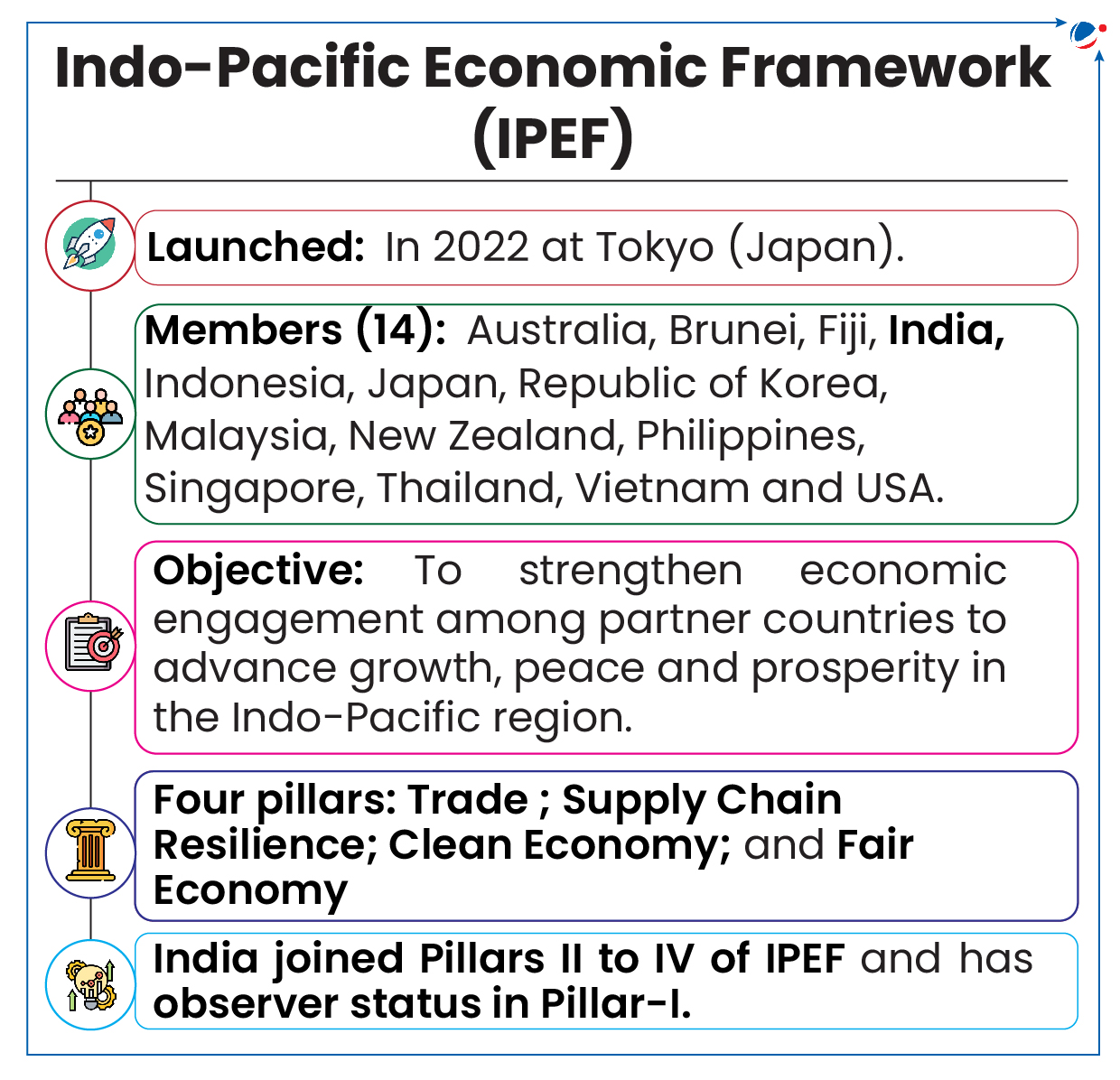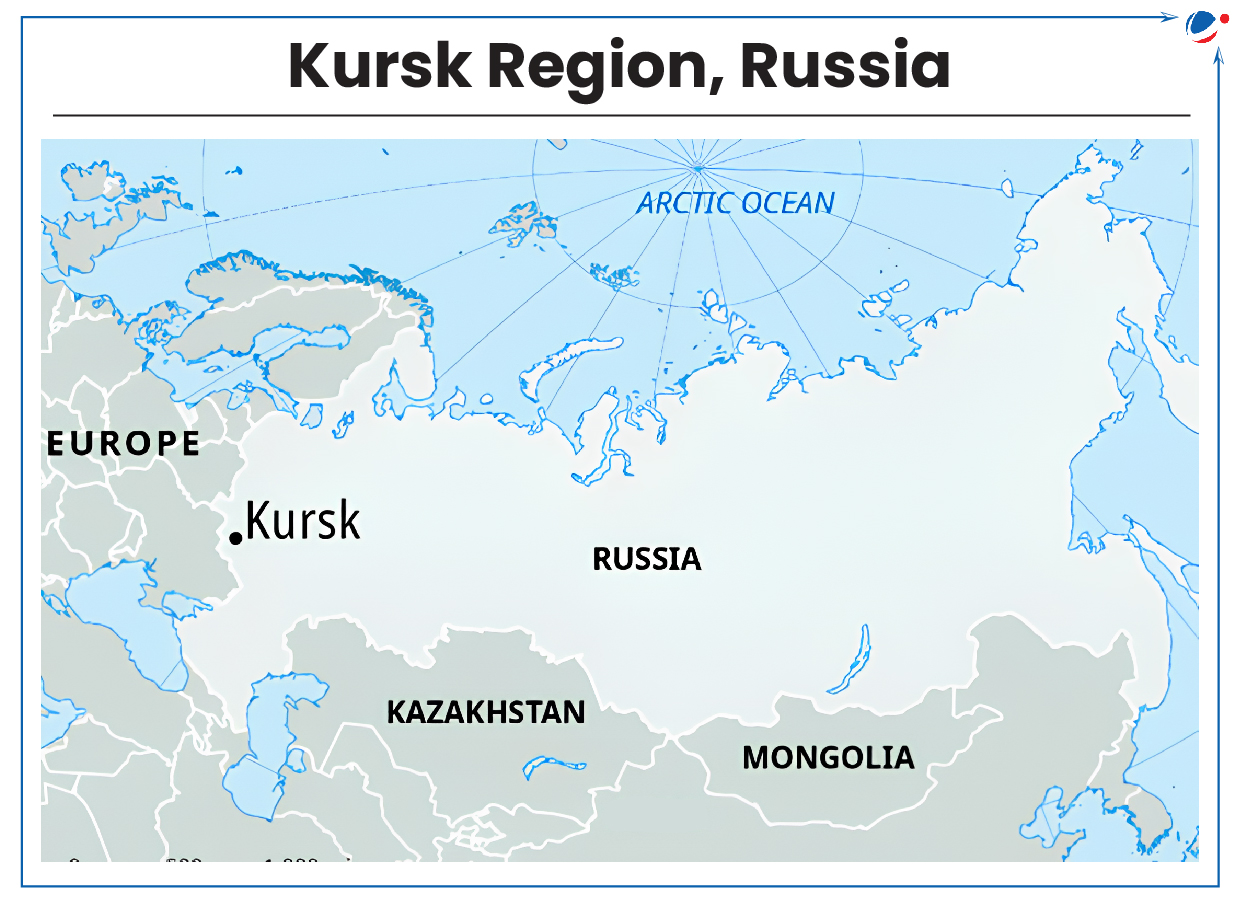Indian American Diaspora
Report by BCG and Indiaspora highlights contributions of Indian Americans to US Society.
- Despite constituting only about 1.5% of U.S. population, Indian diaspora has made substantial contributions to country.
Contributions of Diaspora in USA:
- Economic impact: CEOs of Indian origin head 16 Fortune 500 companies.

- Examples of Business Leaders include Satya Nadella, Shantanu Narayen (Adobe) etc.
- Cultural Influence: Wide celebration of Diwali and Holi, celebrated chefs e.g. Vikas Khanna, Wellness practices with Indian Roots e.g. Deepak Chopra
- Innovation, Research, and Development: 13% of US scientific publications had Indian American co-author. Famous personalities include Har Gobind Khorana, Abhijit Banerjee, Manjul Bhargava.
- Government and Public Services: Kamala Harris (first woman Vice President of Indian descent), Bobby Jindal (first Indian American Governor) etc.
Benefits for India:
- Economic: US is top source of remittance ($26B out of $113 billion in 2022-2023), Since 2000, US companies have invested $ 63 billion in FDI.
- Brain Gain: ~20% of Indian unicorns have co-founders who have leveraged US higher education. E.g. Rahul Chari (PhonePe), Harsh Jain and Bhavin Seth (Dream11).
- Political: Diplomacy and Lobbying (E.g. Indo-US civil nuclear deal), Indian diaspora in global institutions E.g. Gita Gopinath, Raghuram Rajan, Soumya Swaminathan etc
- Cultural Diplomacy & Soft Power: 1 in 10 Americans practices yoga (2023), spreading of Indian cuisine & Ayurveda.
- Indo-US scientific collaboration: E.g. NISAR, iCET etc.
- Tags :
- India-USA
- Indian Diaspora
India Elected As Vice-Chair Of IPEF’s Supply Chain Council
Pursuant to Indo-Pacific Economic Framework (IPEF’s) Supply Chain Agreement, India and 13 other IPEF partners have established three supply chain bodies. These bodies include:
- Supply Chain Council: To pursue targeted, action-oriented work to strengthen supply chains for those sectors and goods most critical to national security, public health, etc.
- Crisis Response Network: To provide a forum for a collective emergency response to exigent or imminent disruptions.
- Labor Rights Advisory Board: To bring together workers, employers, and governments at the same table to strengthen labor rights and workforce development across regional supply chains.

Supply Chain Resilience (SCR)
- SCR is the ability of a supply chain network to withstand disruptions and minimize the effects of upheaval on revenues, costs and customers.
- Supply Chain is the interconnected journeyof a raw materials, or products from their assembly to final sale.
- Threats to SCR: Geo-political (e.g., disruption in energy supplies due to conflict between Russia-Ukraine), Economic (e.g., COVID-induced demand and supply shocks), etc.
- Measures taken for SCR by India
- Global: Supply Chain Resilience Initiative (Australia, India, and Japan), Quad Supply Chain Initiative, etc.
- National: PM Gati Shakti National Master Plan, National Logistics Policy, PLI Scheme for different sectors, etc.
- Tags :
- IPEF
- Supply Chain Resilience
Kursk Region

Russia declared emergency in Kursk region.
About Kursk Region
- It is located in the central part of the Eastern European Plain and borders Ukraine.
- The basins of the Dnieper (Seim, Psel) and Don rivers are located on its territory.
- The main type of soil is chernozem.
- It has prospected deposits of iron ore, phosphorites, peat, and building materials.
- Tags :
- Russia
- Kursk Region
St. Martin’s Island
Reports have claimed that the US wanted to establish a military base in St. Martin’s Island of Bangladesh.
About St. Martin’s Island
- A small coral island, located in the northeastern part of the Bay of Bengal.
- It is also referred as 'Narikel Jinjira' or Coconut Island, 'Daruchini Dwip' or Cinnamon Island, etc.
- Island was once an extension of the Teknaf peninsula but was separated due to the submergence of a portion of the peninsula.
- In 1974, Bangladesh and Myanmar reached an agreement that the island would be a part of Bangladeshi territory.
- Geopolitical significance: Located near Bangladesh and Myanmar.
- Tags :
- Bangladesh
- Coconut Island
- St. Martin’s Island
- Daruchini Dwip
- Cinnamon Island



